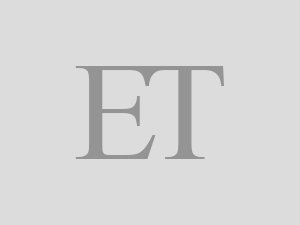The first major rate hike since 2021 by a telco is aimed at shoring up average revenue per user (ARPU) in absence of monetisation of 5G services where telcos have made huge investments in buying airwaves and rolling out network, say experts.
No Change for JioBharat/JioPhone
The new rates will come into effect from July 3.
This is the first time when Jio, with more than 472 million prepaid and post-paid users, has taken the lead in hiking tariffs.
Historically, when a telecom company has increased rates in India, others have followed with similar hikes.
Airtel and Vodafone Idea didn’t respond to ET’s emailed queries.
Jio’s rate hikes start from the Rs 155 plan, which will now cost Rs 189. The price of one of the most popular monthly plans — Rs 239, which comes with 1.5 GB data per day — has been revised to Rs 299, an increase of over 25%.
But the rates for users of Jio’s 4G feature phone and smartphones will continue to be the same, as the company continues to woo 2G users to its services with the JioBharat and JioPhone offerings. “Even today, 250 million feature phone users in India remain stuck in the 2G era, unable to access digital service,” Jio said in a news release.
Even after a 20-25% hike, India will still have one of the lowest telecom tariffs in the world, according to analysts.
After the conclusion of the spectrum auction on Wednesday, wherein all three private telcos participated selectively, a hike in tariffs was expected as the companies look to monetise their existing investments before going in for fresh capital expenditure.
“The introduction of new plans is a step in the direction of furthering industry innovation and driving sustainable growth through investments in 5G and AI technology,” the news release quoted Reliance Jio chairman Akash M Ambani as saying.
Analysts say Jio’s muted participation in the spectrum sale — it bought spectrum worth less than Rs 1,000 crore in two circles — signalled its intention to focus more on 5G monetisation than continuing subscriber addition.
This, especially as Jio’s ARPU has hardly moved in the last year — it posted Rs 181.70 in the fourth quarter of fiscal 2024 from Rs 178.80 a year earlier.
Jio and Airtel, the top two telecom operators, have already invested over Rs 2 lakh crore in rolling out 5G, but so far there has been no return on investment, say experts. They have been offering free 5G services, in a bid to lure customers towards the latest technology.
“India’s telecom tariffs are among the lowest in the world and totally unsustainable. Somebody had to make the first move and it’s good to see telecom market leader, Jio taking the critical call to increase headline rates by 12-25%, a move that underlines its ambitions to boost revenue instead of just growing subscriber base,” Rohan Dhamija, head (India & Middle East) at consultancy Analysys Mason, told ET.
Jio’s ARPU could potentially increase by 10-15% in the coming quarters and pave the way for the much-needed monetisation of its capex-heavy 5G business, he said. “The other telcos (Airtel and Vodafone Idea) are bound to respond quickly to Jio’s move and push forth strong hikes too as there is no other way to boost telco ARPUs to the targeted Rs 250-300 level,” he added.
The telecom sector last raised tariffs by 20-25% in November 2021. After that, there has been no significant hike, though telcos keep on tweaking certain plans to increase revenue realisation.
Analysts say the beneficial impact of the headline rate hikes on telcos’ revenue would kick in by the second and third quarters of FY25, depending on the magnitude.
Brokerage CLSA recently estimated that Jio, Airtel and Vodafone Idea) need to target at least a 20% hike in headline rates, post-elections, especially if sectoral ARPU is to grow to around Rs 200-217 by FY25-26 from an estimated Rs 180 in FY24.
In May, Airtel managing director Gopal Vittal had said substantial tariff repairs were required at an industry level as the existing 9.5% RoCE (return on capital employed) was extremely low.
Vittal argued that while tariff hikes would invariably lead to some SIM consolidation, the upside benefits are far greater as consumers would re-adjust spends and take the higher rates in their stride.
According to a recent BofA Securities report, as per a recent online customer survey, some 36% of Jio and Airtel users were ready to take a potential 20-25% tariff hike in their stride, post-elections.
(Catch all the Business News, Breaking News, Budget 2024 Events and Latest News Updates on The Economic Times.)
Subscribe to The Economic Times Prime and read the ET ePaper online.
Read More News on
(Catch all the Business News, Breaking News, Budget 2024 Events and Latest News Updates on The Economic Times.)
Subscribe to The Economic Times Prime and read the ET ePaper online.










 Get Unlimited Access to The Economic Times
Get Unlimited Access to The Economic Times
